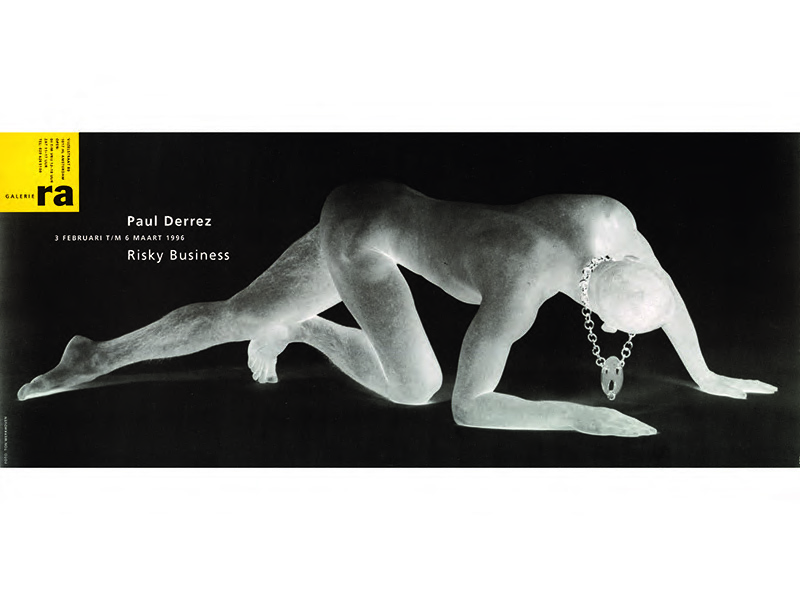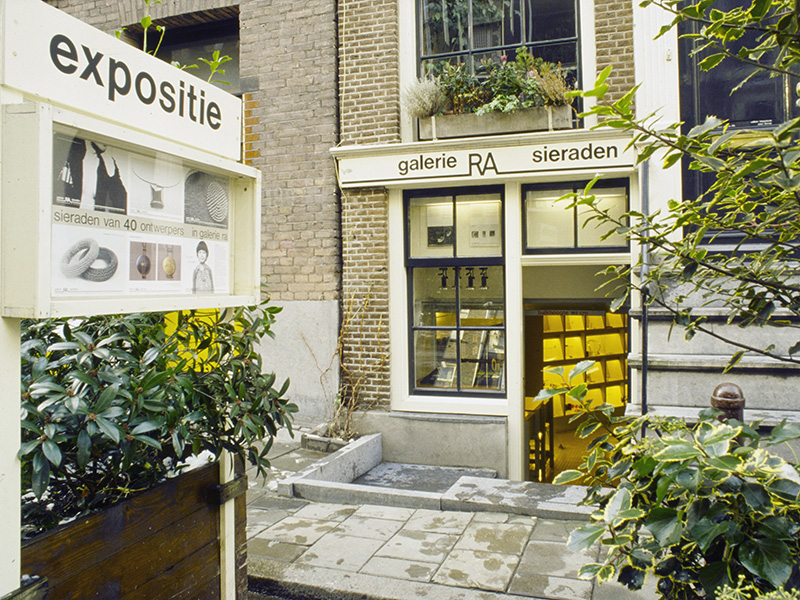
Susan Cummins: Congratulations on the very long run of your gallery. What’s your background? What kind of a family did you come from, and what kind of educational training did you have?
Paul Derrez: I was born in 1950 in Sittard, a small city in the (Catholic) south of the Netherlands, very close to the border with Belgium and Germany. I had two older brothers and one younger sister. There, in the early 20th century, my father’s father had opened a shop for jewelry, watches, and spectacles. He had been trained in Germany as a watchmaker. Unfortunately, he died young, in 1918, of the so-called Spanish flu. His wife and his wife’s sister continued the shop in a successful way and raised the three children.
My father went to Schoonhoven, a little town known for its jewelry, silver, watch, and clock industries, with a technical school for these fields. He also became a watchmaker. During the war, he took over the shop and married my mother, who was trained as a primary school teacher. When my father died in 1965, at the age of 51, my mother decided to continue the shop. I was 15 by then and in secondary school. I loved to help in the shop, avoiding my schoolwork. I decided to attend the Design Academy in Eindhoven, to become an industrial designer.
I liked it, but when the professional future came more into focus, I started hesitating. In the meantime, I had discovered I was gay, and I celebrated my freedom. In experimenting with movement, dance, and ballet, I improved my confidence and personality. So I swapped to a school for drama in Utrecht. But, after a year, my talents proved not to fit this course, which was clear when the school’s director said, “Paul, this is professional training, not a therapy program!” So I had to leave, and my mother allowed me to choose another course of study, which would be the last one.
I chose goldsmith training in Schoonhoven, with the aim of continuing my mother’s jewelry shop in Sittard. I realized that a mix of dealing with objects, presentation and promotion, and dealing with customers was my thing. During this course I met Willem Hoogstede, a primary school teacher who worked and lived in Amsterdam. I spent my practical year for my goldsmith training in the workshop of Hans Appenzeller and Lous Martin, two jewelry makers who ran Galerie Sieraad, a gallery specializing in contemporary jewelry in Amsterdam. I moved into Willem’s place and we have lived together ever since.
I decided not to go back to Sittard and to instead set up a jewelry praxis in Amsterdam. I learned about jewelry as craft, design, or art, and became familiar with the jewelry scene. In that year—1975—Galerie Sieraad closed. The jewelry makers represented by Sieraad started meetings, discussing how to present contemporary jewelry. To create a cooperative or an association? To connect to craft, design, art, or fashion? To assimilate with one of those fields or to stand apart, to segregate? The same discussion about integration or segregation was going on in the gay movement and I thought that segregation could speed up the emancipation process and make it more independent.

Why did you start the gallery?
In 1975, Willem and I found an apartment in the center of Amsterdam with a basement, where I could have my workshop. While renovating the basement, which had a separate entrance to the street, the idea occurred to me to jump into the gap Sieraad had left and to open a gallery there. The Netherlands had a group of ambitious makers, and Sieraad had raised a small but enthusiastic audience, but there was no venue anymore. I visited all the existing jewelry galleries in Europe and interviewed their owners. They all advised me not to start a gallery, but I nonetheless did, in October 1976. I developed a concept for the structure of the gallery: introducing work via a continuous program of exhibitions; giving an overview by building a permanent collection; and providing information about all different aspects of the field. I started by showing Dutch work, but gradually the program and collection became more international. Ra Gallery soon became a name in Amsterdam, the Netherlands, and abroad.
We reached, informed, and educated an audience and a clientele. Crucial in this process was the production and mailing of cards, leaflets, and bulletins, to attract, to invite, and inform. From the beginning, graphic designer Nel Punt took care of all this material. I was the director of the gallery, and responsible for all aspects.
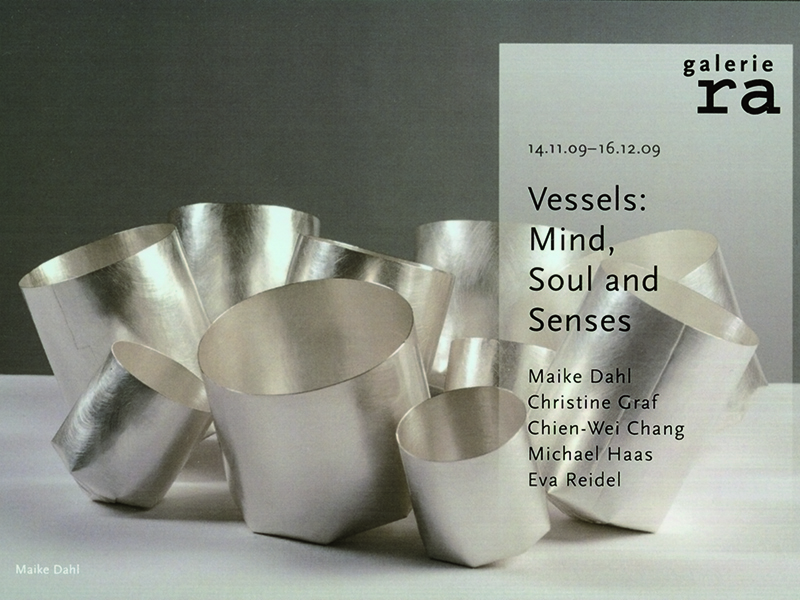
How do you define contemporary or art jewelry?
I used the term experimental jewelry to avoid stereotypes about craft, design, or art. I chose jewelry that was original, clever, witty, and communicative. I was allergic to what were in my opinion false qualities like value, uniqueness, handmade. I preferred a multiplied clever design in paper or plastic above a unique handcrafted golden monster. I liked and still like to cross classic borders qua design, material use, production method, and wearability.
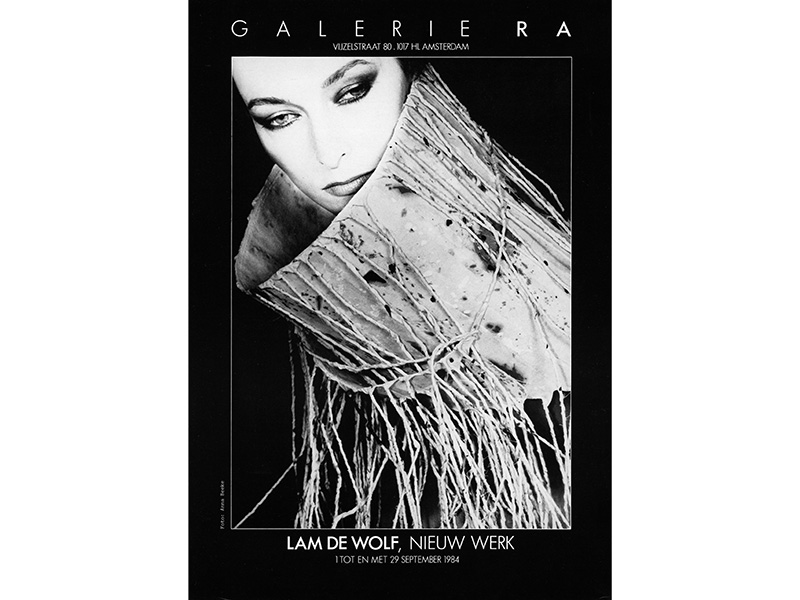
Do you think wearability is an important ingredient of jewelry?
Wearability has more to do with a mindset than with practical matters. I always mention in this respect the popularity and stupidity of wearing high heels. Wearability plays different roles in riding a bike or walking the red carpet.
Did you and Willem Hoogstede work together in the gallery? What role did you each play?
Willem had his job as a teacher, but was from the very start very supportive and enthusiastic. And he kept me fed when business was weak. It was our enthusiasm and confidence that did the job. And a bit of heritage money to invest helped, too.
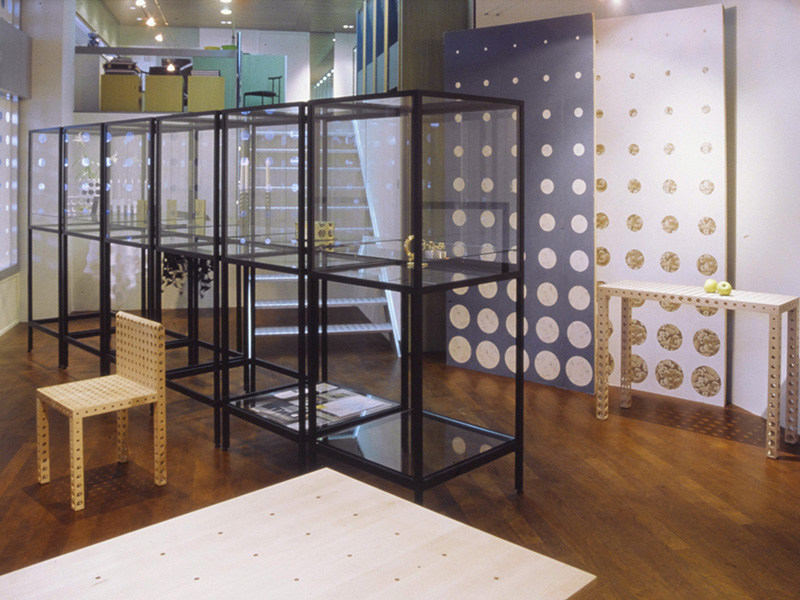
When you opened in 1976, the world was still reacting to the radical upheavals in society caused by the protests and cultural changes started in the 1960s. How did you feel about those changes, and can you recall your thoughts about starting a business in that atmosphere?
It was a very exciting time in every sense. On a personal level we felt liberated and free, ready to fight for gay rights and emancipation. On a professional level, I wanted to show new, exciting work, work nobody had seen or even imagined before. Radical changes were already introduced in the 60s, but in the 70s it became a movement. Ra Gallery operated in the heart of this movement.

Can you give us the date you opened and the location? How many times did you have to move? Can you give us a brief description of each space? What caused each one of those moves to take place?
After one year we were able to connect the gallery at Lange Leidsedwarsstraat 178 with a similar space next door, so we had separate rooms for exhibitions and the permanent collection.
Endless ambition led to moving the gallery in 1983 to a much larger space in a separate building, at Vijzelstraat 80, where it functioned successfully until 2010. Both venues were in the 17th-century part of Amsterdam, in the art and antique district. In 2010 the gallery moved to a smaller, more intimate space at Nes 120, in medieval Amsterdam, in an area with a tradition of jewelry production and trade. For this reason, I initiated a district and branch association called JewelleryQuarterAmsterdam. The end of the lease at Nes caused the gallery’s closure 10 years later, at the end of 2019. During all 43 years, the structure and the policy of Ra Gallery did not change—only the scale and atmosphere did.

Do you think contemporary jewelry reflects the political and social times when it was made?
The Ra exhibition program reflected my preferences but also the spirit of the times, not as a fashion but more like a movement. I showed a broad spectrum of work: all kinds of techniques and materials, all kinds of wearing, and in a broad price range. Despite this broad spectrum, Ra Gallery became synonymous for work in alternative and cheap materials.
Is it possible, out of the 400 or so exhibitions you have organized, for you to choose two or three of the most memorable? Can you describe a little about them and why they’ve stuck with you?
So it was a shock for Ra’s audience and the jewelry community when Robert Smit showed his unique and ultimate precious jewelry at my gallery in 1985. It created a heavy dispute between opposites in attitude: Robert Smit and Gijs Bakker.
How would you say you differentiated yourself from other Dutch galleries? Did you purposefully cultivate that difference?
Shortly after, Robert Smit left for the new Galerie Louise Smit. The policy of that gallery was the opposite of Ra’s: There, preciousness and uniqueness was celebrated! In Nijmegen, Galerie Marzee developed a different character and policy with well-crafted sculptural work. Before the closing of Galerie Louise Smit, her former co-director Rob Koudijs opened Galerie Rob Koudijs, with a strong focus on art jewelry for collectors.

Paul, you’ve always been known for your personal style of far-out haircuts, clothes, and jewelry. How has your personal style affected what you have shown in the gallery? Could you give an example?
Wearing the jewelry was always very important for me. I always wear jewelry myself and see it as part of my image and personality. The same goes for hairstyle, clothes, shoes—all ingredients to play with, to communicate with, to evoke comments or a laugh …
Did camp and queerness affect some aspect of the gallery? How?
Just as I tried to avoid stereotypes in jewelry design, I try to avoid stereotypes in behavior and gender, in my own presence, but also in the promotion of the jewelry shown at Ra. The posters with models wearing jewelry, which Ra produced in the period 1983–1996, showed an especially exciting and inclusive mix.
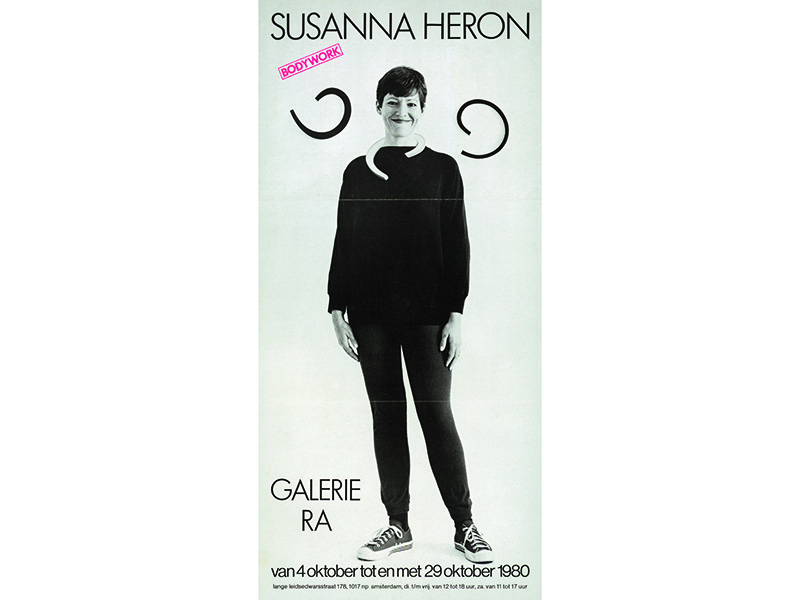
Was there one jeweler who showed with you from the beginning and all the way through to the end?
Lam de Wolf showed her works for the first time at Ra in 1979, and continued until recently. Her work represented all aspects of crossing borders: in style, design, construction, material, and placement on the body. As did Marjorie Schick with her body ornaments.
What qualities do you have that enabled you to keep the gallery going steadily for 43 years? Was it important that you’re a jeweler yourself?
Maybe being a jeweler myself helps in understanding the work by colleagues better. For sure it contributes to the respect for the craft and their makers. But the main factor in keeping it going was commitment: going on in good and bad times.
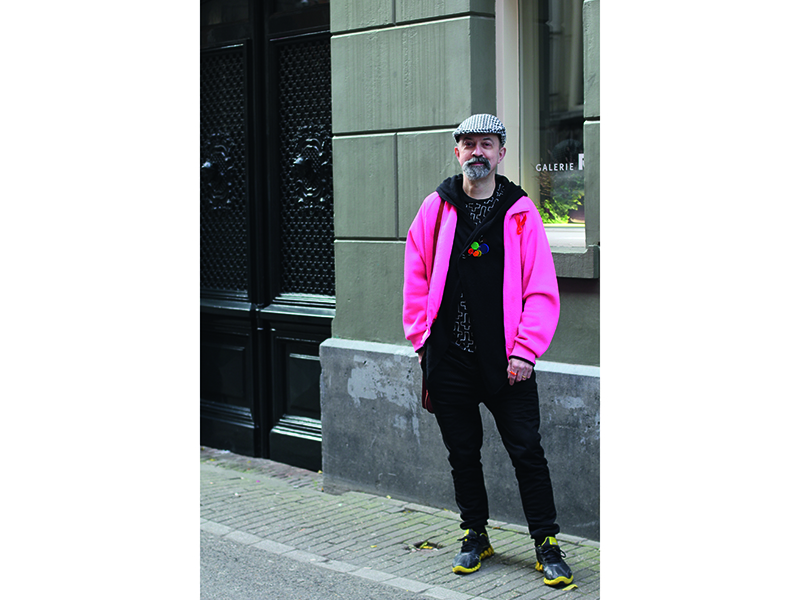
Over the years you have interacted with museums in the Netherlands and abroad. You have been a curator, a collector whose collection was on exhibit, and an artist who was included in exhibitions. What role does the gallery have in relationship to museums, and why did you interact with them?
Ra Gallery had always had good connections with museums, their directors, and curators. A lot of the work at Ra was acquired by institutional collectors. A large part of the Stedelijk Museum’s jewelry collection came from Ra, for example. It’s just part of the mission to connect, inform, and educate. To convince with quality, actuality, and relevance.
As you look back over the years, do you think there was a “golden era” of contemporary jewelry?
There were more exciting periods and less exciting periods. The early 80s were very refreshing. The internationalization brought new perspectives.
Has there been a guiding principle for accepting an artist into Ra? Has it changed over the years?
Quality in content, professionalism, and continuity are important. I like to start a relationship with the artist and to show developments in their work. The lifetime bonds illustrate this!
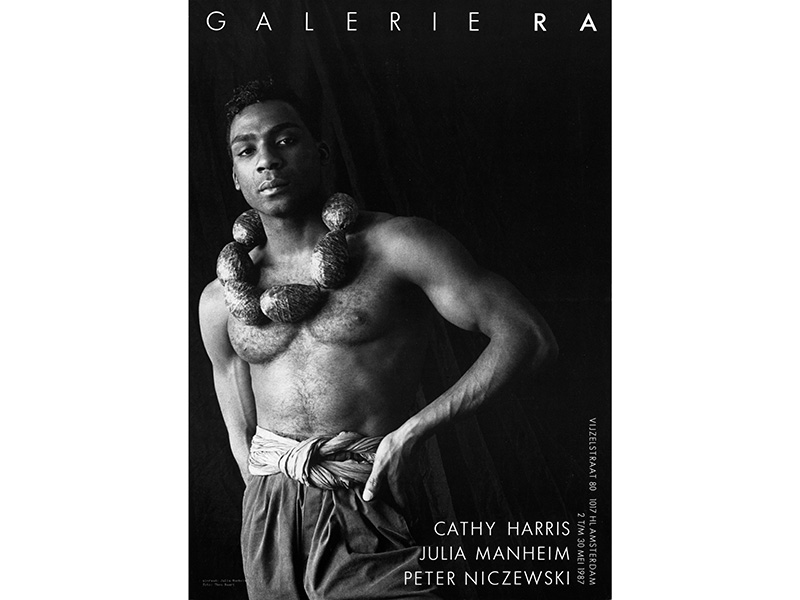
As a jeweler yourself, how do you think you made decisions about the directions the gallery should take or who you wanted to show that would be different from a nonjeweler?
A good example is that when I learned silversmithing myself around 2000, I started to introduce silver work by colleagues. Like entering a new era. And it was very interesting to see that Ra’s audience, open for contemporary jewelry, also became interested in contemporary silver.
You have shown objects as well as jewelry. How did that develop?
When I started Ra I was also very much interested in (industrial) design, so that became part of the program. I liked to organize themed exhibitions, like on vases or spoons (with accompanying booklets).
When did you start the Ra newsletter?
We started it in 2010. Right from the start, in 1976, the gallery produced informative leaflets, later followed by a system of cards (to collect). When the gallery moved to Vijzelstraat, in 1983, the poster-bulletin was introduced. This combination of promotion and information became iconic. Later on we changed again to cards, now in color, and leaflets in black and white. From 1976 until the end, the same graphic designer was responsible for all of Ra’s graphics, which brought a feeling of continuity in style over all those years.
Starting in 1986, with the book 10 Years Ra, a tradition was born to produce a book every five years. Sometimes these were themed, like Masquerade or Ra Present (about multiples). I also produced some books about my own work: Paul Derrez, Cool Creator, in 1997, and Paul Derrez, Maker, jewellery and objects 1975–2015.
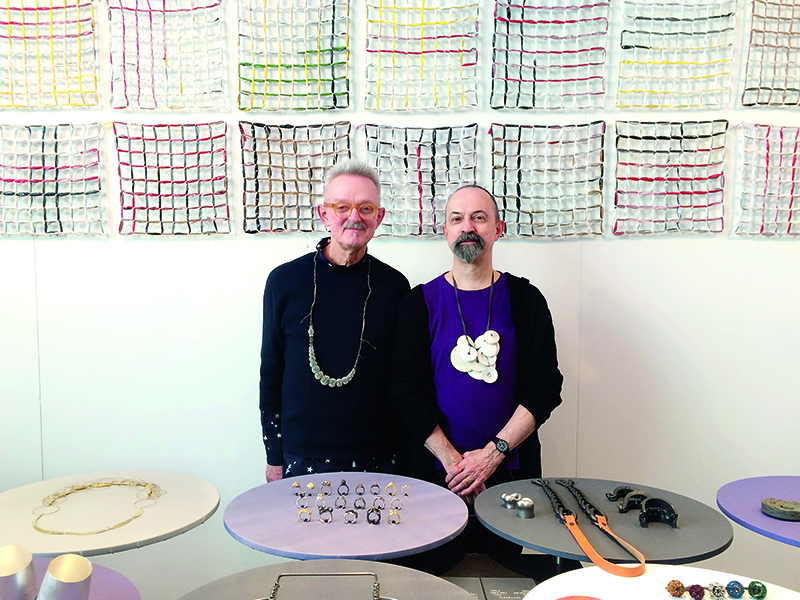
Do you remember the early days of website development? When did you get a website?
In the production of print work, Ra Gallery was very advanced. I invested a lot in photographs for promotion and print work, and in slides for giving lectures, until the year 2000. Then everything became digital. I donated a selection of photographs to the Stedelijk Museum Amsterdam, and gave the (analog) Ra archive covering 1975–2000 (including 9,000 slides) to the National Archive.
In 2001 we got a website, but I found it quite difficult to manage. I am not so experienced with computer work, and I do not like it, so it became a heavy job to keep it all updated.

How would you describe a typical client? Or was there such a thing?
Ra Gallery raised its own clientele, which became very faithful. It acted and felt like a family! When the gallery closed last December, it was moving to get such a personal and thankful response. The general connection was the love of challenging and interesting jewelry and objects. As the collection was very diverse, it appealed to a diverse audience: in style, in age, and in money to spend. Ra tried to be democratic and inclusive!
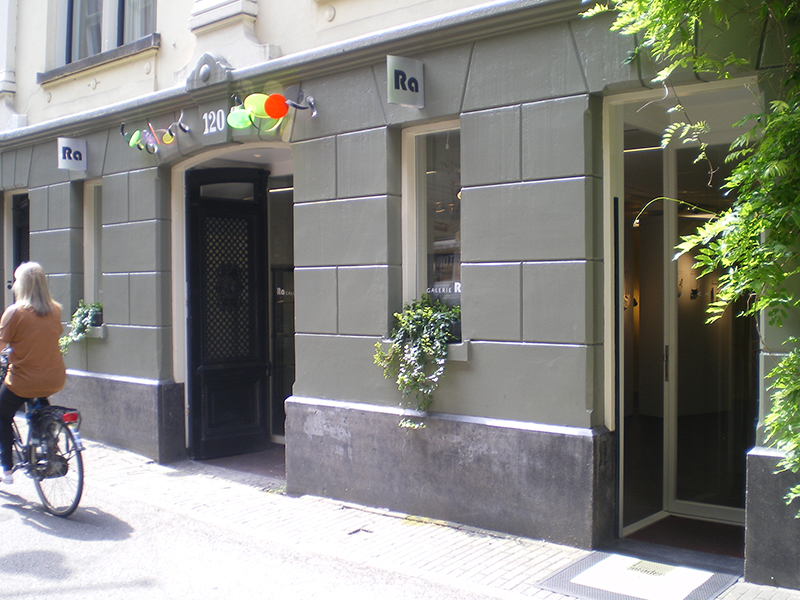
Do you have plans for the future at this point?
Let me end with a remarkable development: In the last days of Ra, a woman from a housing company came in and offered to rent me a beautiful little space in a good spot in the jewelry quarter that had great potential for a jewelry shop. As I did not want to start a new enterprise myself, I made connection to the Amsterdam jewelry scene. There is now an association in preparation to start there, as a collective, a jewelry shop for jewelry in multiples. I’m very enthusiastic for this concept and cannot wait for it to open. My only role in this will be as a supportive member of the collective, with delivering good work, and temporarily acting as a shop assistant. This new place, at Grimburgwal 4, is planned to open soon. I feel the same excitement as I felt 45 years ago!
Thanks!
